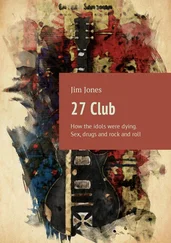As late as 1890, Aram was still attracting novelists. Mary Elizabeth Braddon (author of one of the first sensation-novels, Lady Audley’s Secret, pp.296–7), now with nearly sixty novels to her name, and an invalid husband to support, produced One Life, One Love. In it she repeats the long-hidden-murder motif, enmeshed in a story of the Paris Commune, double-identity, heroines regularly going mad and a plot so confusing that there is no real resolution, because, I strongly suspect, the author could not quite work out what had happened, and understandably did not want to read it over again. The Aram theme was briefly touched on in 1894, in Catherine Louise Pirkis’s ‘The Murder at Troyte’s Hill’, in which a lodgekeeper is murdered after decades of blackmail, and the case is solved by the lady detective Loveday Brooke. The murderer is writing a treatise on Aram’s legendary subject, philology, ‘a stupendous work. a work that will leave its impress upon thought in all the ages to come’ (for more on this story, see p.402).
And then there was a final, extraordinarily derivative theatrical version. After All (1895) was written by Freeman C. Wills, W.G. Wills’ brother. Aram was played by Martin Harvey (later Sir John MartinHarvey), who had worked for Irving for fourteen years, and Ruth (the Madeline character) by Mabel Terry-Lewis, Ellen Terry’s niece. It had, remarkably, a happy ending: Houseman denounces Aram, Aram defends himself, and Walter in a gentlemanly way accepts his apology. It is not surprising that no one chose to follow this.
The constant renewal of Aram’s story contrasts sharply with another eighteenth-century murder case that also achieved a blaze of interest in the nineteenth century, but as quickly sputtered out. In 1739, a Mr Hayes stopped at Jonathan Bradford’s Oxfordshire inn. In conversation Hayes disclosed that he was carrying a great deal of money, and, two guests overhearing this, a robbery was planned. That night the two men entered his room, only to find Hayes dead and Bradford standing over the body, bloody knife in hand. Bradford’s defence was that he had gone in to rob his guest, but had found him already dead, and had just picked up the knife that was lying beside the corpse when the two men discovered him. This unlikely story was given short shrift at his trial, and Bradford was found guilty and hanged. Eighteen months later, so the story goes, Mr Hayes’ servant confessed on his deathbed: he had murdered and robbed his master, and Bradford had appeared just as he fled. There is little contemporary material to allow a balanced assessment of the case, but four inhabitants of an inn all set on robbery on the same night sounds more like art than life.
Kirby’s Wonderful Magazine, a hodgepodge miscellany which reprinted the story in 1804, felt it needed an injection of realism, so it made the two guests enter the room because they heard a noise, not because they too were planning robbery. Several newspapers picked up the story, although with no great sense of urgency – the Ipswich Journal ran it two years later, mixed in with paragraphs on the slave trade and on the reported death of the explorer Mungo Park, and a report that a pointer had had a litter of seventeen pups.
The novelist Amelia Opie used the basic scenario for a short story in 1818. In ‘Henry Woodville’, Woodville is a clerk to a prosperous merchant. At an inn he and David Bradford, an ex-colleague who had been sacked for dissipation, quarrel. That night the inn’s waiter robs and murders Bradford, knowing that Woodville will be suspected because of the quarrel. Woodville is found guilty, but as he is about to be executed the waiter, now repentant and dying, appears at the foot of the scaffold to assure the crowd, ‘I – I murdered Bradford! – I am the real murderer!’ before collapsing. There were no detective, suspense or procedural motifs in this version – none of the elements that, half a century later, would be the main purpose of any similar tale.
It was perhaps the still undeveloped nature of detective fiction that made Bradford of more interest to theatre. There was a token nod in 1811 in Killing No Murder, by Thomas Hook. One of the characters is named Bradford, the play is set in an inn, and another character is told to report his own pretended death. Otherwise it is a standard farce, with everyone in love with someone else, all at the same time pretending to be their own cousins or uncles or valets. In 1826 Drury Lane’s The Murder’d Guest had a very Jonathan Bradford-like set-up, with an Oxfordshire inn, a guest who arrives with his servant and is put in a room next to two strangers, and a murderer who is preempted. This was followed in 1830 by The Murderers of the Round Tower Inn, a ‘Nautical Drama’ at the Royal West London Theatre. It too had a Bradford-like innkeeper, whose stepdaughter innocently wonders, ‘What can be the reason of his always sending me to bed so early, whenever Travellers sleep in the house?’ ‘Dreadful groans and noises in the night’, combined with the travellers’ complete absence in the morning, fail to enlighten her.
It was in 1833 that the story of Jonathan Bradford finally found fame, when David Osbaldiston, the manager of the Surrey Theatre, turned to Edward Fitzball for a new work. Many years later, Fitzball claimed that a theatre manager had once advised him: ‘Look into the papers’ for a subject; the daily crime-sheets had ‘incident enough invented there’. This was standard procedure for many dramatists. For most of the century, playwrights barely scratched out a living, while churning out vast quantities of work. For authors, drama did not pay. A century earlier, Dr Johnson had received nearly £300 for the performing and publishing rights for a play that ran nine nights. By 1829 Douglas Jerrold was paid £5 a week as house author at the Surrey, and was expected to write at least one play a month; George Dibdin Pitt, the man who brought Sweeney Todd and his murderous barber-chair to the stage in 1841, produced twenty-six plays in 1847 alone. Dickens claimed that W.T. Moncrieff had written seven melodramas for £5 each. *
In terms of content, the result, Jonathan Bradford, or, The Murder at the Roadside Inn, was not much different from earlier evilinnkeeper melodramas. Fitzball definitely knew Mrs Opie’s story, because two years earlier he had adapted another story from the same collection. He also used some standard elements from stage and penny-bloods: there was an underground crypt borrowed from gothic romance, a devil-may-care Irish highwayman and a comic Cockney apprentice. The key to the play’s extraordinary success was the completely novel staging devised by Fitzball. He set the four rooms of the inn all onstage at once, in cross-section, and wrote the murder scene so that the action took place simultaneously across them. Or, as one advertisement had it, ‘In this peculiar scene an effort will be made (never yet attempted on any stage) so to harmonize four actions as to produce one striking effect! Fitzball later remembered how the mutinous actors petitioned Osbaldiston ‘to insist on my leaving out this perplexing, unexampled, undramatic, unactable four-roomed scene’. Osbaldiston too was unenthusiastic, but finally agreed to let Fitzball make the attempt. On the opening night, ‘the audience looked at each other exactly in the same fashion as the actors had done’. But then, ‘as if convinced, on reflection, that there was something original to applaud. they took the lenient side, and applauded unanimously’ *.
The play was a smash. Its hundredth performance, or ‘centenary’, got a notice in The Times. †Ultimately the play closed in December, after a run of 161 consecutive performances (excluding Sundays). It was the first play ever to achieve this, and the record that was held for over two decades. Smaller populations had produced a repertorybased system reliant on the repeated attendance of the same people, rather than the infrequent attendance of different ones. In the 1840s, only four plays ran in London for more than a hundred nights and they were not consecutive. Short runs in 1833 did not necessarily signify failure, only the small theatregoing population. Jonathan Bradford was staged in Dublin in November and, at least according to the advertisements, was received with ‘rapturous and unbounded applause’, but it only appears to have had three performances. The play was revived over and over again – advertisements for different versions continued to appear as late as the 1880s.
Читать дальше












